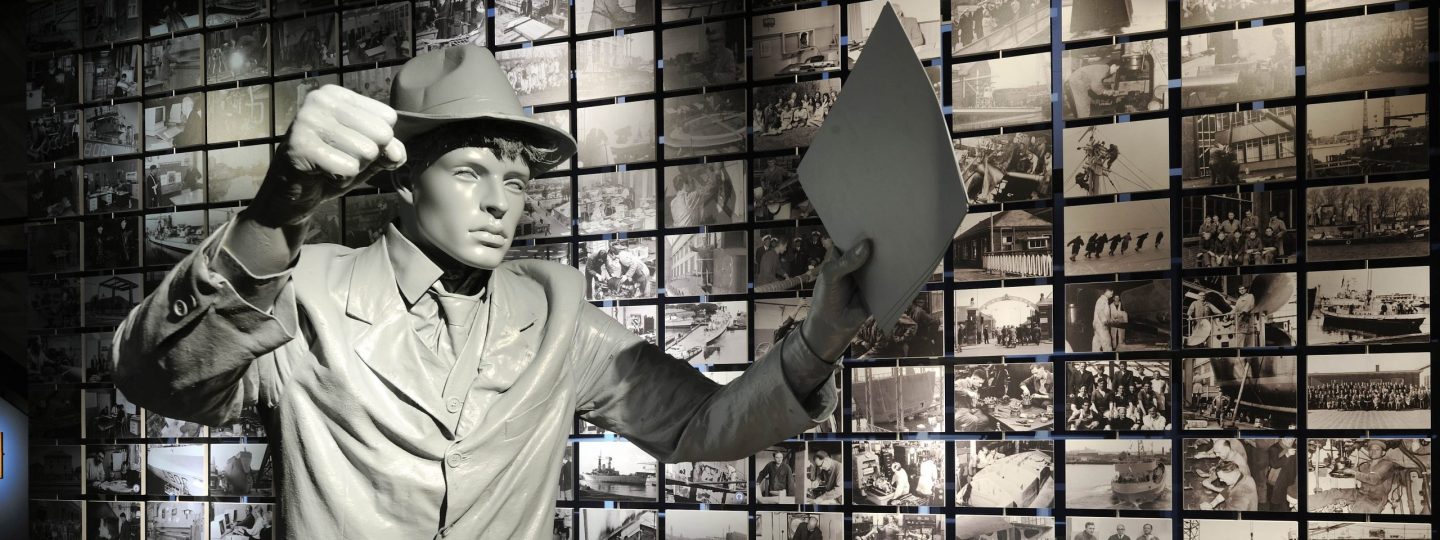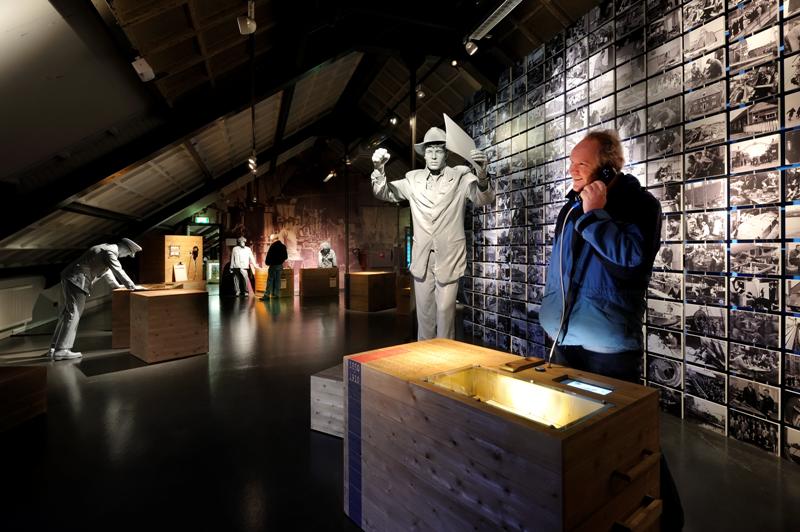
Naval dockyard
Den Helder is known as a naval town. What is less known is the town’s link with the ‘Rijkswerf’. The yard meant jobs for generations of people. At its height, some 2,000 people, or around ten procent of the entire local working population.

The naval dockyard provided jobs and a livelihood for a lot of families in and around Den Helder. The heavy labour was remunerated by a low-paid albeit steady income. It was until the 20th century when labour conditions started to improve. Nonetheless, the naval dockyard gave the labourers a sense of belonging in good times and bad times. To outsiders, the dockyard remained a remote and closed world. Only ‘wervianen’ (dock workers), as they were called in popular parlance, had access to the heavily guarded dock grounds.

Dockyard work is work done
by and for people
This exposition pays homage to the ‘wervianen’ as vital links in the construction and maintenance of the Dutch naval vessels. They made sure the navy ships were able to stay at sea. The following sayings go to illustrate their personal stories: ‘Zonder werf geen vloot’ (No naval dockyard no fleet), ‘Zonder mensen geen werf’ (No people no naval dockyard), ‘Werfwerk is Mensenwerk’ (Naval dockyard work is work done by and for people).